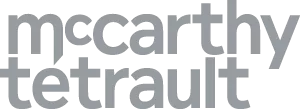- with Finance and Tax Executives
- with readers working within the Property industries
In Ontario (Attorney General) v. Working Families Coalition (Canada) Inc., a narrow majority of the Supreme Court of Canada struck down provisions of Ontario's Election Finances Act ("EFA") that limited third-party spending on political advertising during an election year. The Court held that these spending limits violated citizens' constitutional right to vote under s. 3 of the Charter, which protects not just the right to place a ballot in a ballot box but also the right to participate meaningfully in the electoral process.
This decision changes the legal landscape for third-party political advertising in Canada and widens the scope of the informational component of the right to vote under s. 3 of the Charter.
Background
In election law parlance, a "third party" is any person or entity that is not a candidate, a political party, or a local riding association. Labour unions, business associations, and civil society groups are all examples of third parties.
These third parties may wish to influence the outcomes of Canadian elections, including by spending money on electoral advertising. It is this spending that was targeted by the provisions of the EFA that the Court struck down in Working Families.
In Ontario's most recent provincial election, Elections Ontario listed 40 third parties as registered for political advertising, including interest groups, charities, labour unions, and professional organizations.1 Section 37.10.1(2) of the EFA limited political advertising spending by these third parties to $600,000 for the calendar year of a provincial election, and $24,000 within any provincial riding in the same period.
These third-party spending limits extended beyond election-oriented advertising to capture a wide range of political messaging, including "issues-based advertising" (e.g., advertising on education, justice, Indigenous, health, environmental, and economic issues). The spending limits were first enacted in 2017. In 2021, the restricted period was doubled from 6 to 12 months.
The EFA's third-party spending limits applied to advertisements across a wide range of media, including blogs, print media, social media, television, radio broadcasts, and more. While third parties could spend no more than $600,000 over a 12-month period under the EFA, registered political parties faced no spending limits at all for the first six months of an election year, and they could spend up to $1,000,000 in the second six months of the year.
A group of civil society organizations, unions, and individual citizens challenged the third-party spending limits on the ground that they violated freedom of expression under s. 2(b) of the Charter. That challenge succeeded. Ontario then invoked s. 33 of the Charter (the "notwithstanding clause") to have the third-party spending limits operate notwithstanding ss. 2 and 7 to 15 of the Charter. In response, the applicants challenged the spending limits again, this time on the basis of the right to vote guaranteed in s. 3 of the Charter, which is not subject to the notwithstanding clause.
The Ontario Superior Court of Justice upheld the third-party spending limits under s. 3 of the Charter. A majority of the Court of Appeal for Ontario struck them down.
Decision
A 5:4 majority of the Supreme Court of Canada held that the third-party spending restrictions unjustifiably limited the right to vote under s. 3 of the Charter.
The majority reasoned that limiting third-party spending when political parties faced no similar limits led to an imbalance in political advertising, where political parties could "drown out" or "overwhelm" the voices of third parties during the pre-election year.2 This imbalance was inconsistent with the right to vote, which includes a right to participate meaningfully in elections and to cast an informed vote. These rights require proportionality in political discourse.
The majority reaffirmed Canada's egalitarian model of elections, which involves balancing the rights and privileges of participants in the electoral process, including political parties, candidates, third parties, and voters, "so that voters may be better informed".3 While all participants need not be treated equally, they must be treated proportionately—no one voice can overwhelm another.4
The majority held that the limit on the s. 3 Charter right was not justified under s. 1 of the Charter, as the legislation did not minimally impair the right to vote. Rather, the length of the spending limit "far surpasses what is reasonably necessary to protect the integrity of the election process, or the primary role of political parties in the electoral process."5
Four justices dissented. They explained how a law that unjustifiably limits freedom of expression under s. 2(b) of the Charter may not necessarily unjustifiably limit the right to vote under s. 3 of the Charter, as those two protections are distinct. They would have determined that the third-party spending limits did not violate the right to vote under s. 3 of the Charter.
Key Takeaways
The Government of Ontario has not yet proposed amendments to the EFA. Having just concluded a provincial election campaign that returned a majority government, Ontario is not expected to return to the polls for at least a few years. However, Working Families leaves the door open for governments—both in Ontario and in the rest of Canada—to impose spending limits on third-party political advertising, or to impose other limits on electoral participation, provided that such limits are carefully tailored and proportionate in their effect.
In the current political climate, in which threats of disinformation and foreign interference loom large, Working Families offers principles to guide electoral reform efforts. The majority's decision sends a message to governments and citizens across Canada about the continuing primacy of the egalitarian election model in this country: while legislation may treat different electoral participants differently, it must not allow one type of participant's voice to overwhelm or drown out others'. Working Families underscores that meaningful and informed participation in the electoral process requires citizens to have the opportunity to hear and weigh a diversity of views, and it demands proportionality and balance in political discourse.
The dissenting justices' reasons also provide guidance on the differences between freedom of expression under s. 2(b) and the right to vote under s. 3 of the Charter. They recognize that, although there may be overlap between s. 2(b)'s protection and s. 3's protection, that does not collapse them into one omnibus right. As the majority did not address the differences between these two protections, we may see some courts looking to the dissenting reasons for guidance.
Footnotes
1 Elections Ontario, "Third Party Advertisers – 2025 Provincial General Election" (online).
2 Working Families, at paras. 46-47, 55.
3 Working Families, at para. 32.
4 Working Families, at para. 33.
5 Working Families, at para. 62.
To view the original article click here
The content of this article is intended to provide a general guide to the subject matter. Specialist advice should be sought about your specific circumstances.









